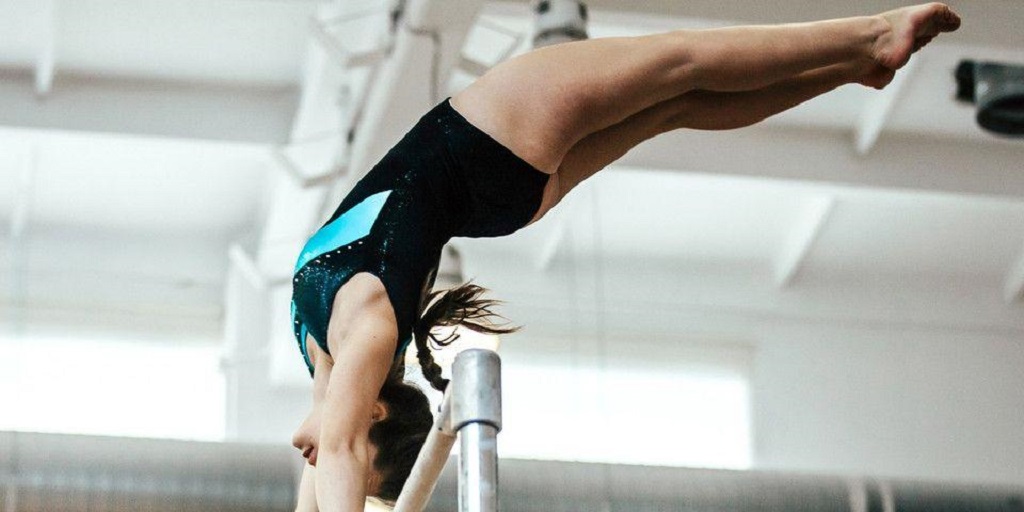
02 May Stay Flipping Strong: Injury Prevention Techniques for Gymnasts
Gymnastics is an awe-inspiring sport that demands incredible strength, flexibility, and coordination. However, the demanding nature of the sport also puts gymnasts at risk for injuries. By incorporating injury prevention techniques into your training regimen, you can stay on top of your game and minimize the risk of setbacks.
Warm-Up and Cool-Down
Never underestimate the importance of a proper warm-up and cool-down. A dynamic warm-up increases blood flow, prepares your muscles for activity, and improves your range of motion. This can help to prevent muscle strains and tears. Focus on exercises that mimic the movements you’ll be performing during your workout.
Similarly, a cool-down helps to bring your heart rate down slowly and allows your muscles to begin the recovery process. Static stretches held for 15-30 seconds are ideal for a cool-down.
Strength and Conditioning
A strong foundation is essential for safe and successful gymnastics. Strength training exercises that target your core, legs, shoulders, and upper back will help to improve your stability and power, reducing the stress placed on your joints. Consider working with a certified athletic trainer or coach to develop a strength and conditioning program specific to your needs and skill level.
Proper Technique and Spotting
Mastering proper technique is paramount for injury prevention in gymnastics. Even seemingly minor mistakes can lead to overuse injuries or more serious accidents. Work closely with your coach to refine your technique on each skill. Don’t be afraid to progress slowly and prioritize safety over rushing to more advanced maneuvers.
Spotting by a qualified coach or teammate is another crucial safety measure. A spotter can provide physical support to help you land safely and prevent falls.
Rest and Recovery
Just like any athlete, gymnasts need adequate rest and recovery time to allow their bodies to heal and rebuild. Schedule rest days into your training program and ensure you’re getting enough sleep each night. Consider incorporating activities like yoga or light cardio on your rest days to promote recovery.
Safety Equipment
Wearing appropriate safety equipment can significantly reduce the risk of injury. Gymnasts may utilize wrist guards, ankle braces, and crash mats depending on the specific skill being practiced. Always use the recommended equipment for each activity.
Recognizing Pain Signals
Gymnastics can be a demanding sport, and fear of missing out or falling behind can sometimes push athletes to ignore pain signals. However, it’s important to remember that pain that worsens with activity is a sign that something might be wrong, and it shouldn’t be ignored. This could be a common gymnastics fear, but pushing through pain can lead to more serious injuries down the line.
Pain that is sharp, persistent, or worsens with specific movements needs to be checked. Consult a healthcare professional to determine the cause and get appropriate treatment. Early intervention can prevent minor injuries from becoming more serious. For middle back pain relief, a healthcare professional might recommend physical therapy, chiropractic adjustments, or other treatment options. In very severe cases, you may even need to undergo a procedure such as lumbar decompression, discectomy, or laminectomy
Additional Tips:
- Maintain good nutrition: Eating a healthy diet that provides your body with the nutrients it needs to recover and perform is essential.
- Hydrate: Drink plenty of water throughout the day to stay hydrated and prevent muscle fatigue.
- Listen to your body: Don’t push yourself through pain. If you’re feeling sore or fatigued, take a break or reduce the intensity of your workout.
- Develop good body awareness: Being aware of your body’s position in space can help you to avoid awkward landings and injuries.
- Cross-train: Include activities like swimming or dance in your training routine to improve overall fitness and reduce the risk of overuse injuries.
By following these injury prevention techniques, gymnasts can minimize their risk of setbacks and stay on the path to achieving their full potential. Remember, prioritizing safety allows you to train harder and reach your gymnastics goals in the long run.


No Comments